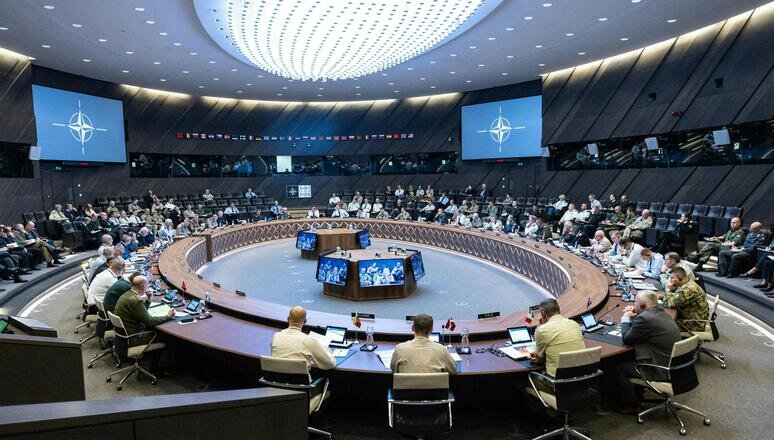Interview
Q&A: in conversation with Honeywell on defence and space
Matthew Milas, president of Defense and Space Business at Honeywell Aerospace, sheds light on the company's role in the F-35 programme and its focus on emerging defence technologies. Harry McNeil reports.

Matthew Milas, president of Defense and Space Business at Honeywell Aerospace. Credit: Honeywell
In this exclusive interview, Harry McNeil sits down with Matthew Milas, president of Defense and Space business at Honeywell Aerospace, to discuss the company's involvement in the defence industry, particularly focusing on its contributions to the F-35 programme and emerging technology areas.
Harry McNeil: Matt, thank you for joining us today. Can you start by giving us a brief introduction to yourself and your role at Honeywell?
Matt Milas: Certainly. I joined Honeywell just over a year ago and currently lead our defence and space business, which encompasses everything from land, sea, air, space, and cyber technologies. I've worked with the likes of Boeing, Lockheed, Raytheon, Collins, L3Harris and Spirit AeroSystems, and this is probably my sixth time working on the F-35 programme with various capacities in the F-35 programme since its inception.
When you look across the entire span of what we do on the F-35 programme, Honeywell contributes about 100 different parts across the F-35.
Harry McNeil: Let's dive into Honeywell's involvement in the F-35 programme. Could you provide an overview of Honeywell's contributions to the programme, particularly in terms of the power and thermal management system?
Matt Milas: Honeywell has been involved in the F-35 programme since its initial design. Our power and thermal management system (PTMS) played an integral part in reducing the aircraft's size and weight, helping to shave off about 11 inches and about 1,000lb.
The PTMS manages thermal conditions and provides power to essential electronic systems, life support systems, and provides emergency power. When you look across the entire span of what we do on the F-35 programme, Honeywell contributes about 100 different parts across the F-35 [fighter]

A key operator in the global defence aerospace sector, Honeywell is engaged in a number of high-profile programmes, including the F-35 stealth fighter with its PTMS system. Credit: Honeywell
We're expansive with all the areas that we support, everything from the wheels and brakes to other valves and systems. The PTMS is the most critical function of the aircraft and has seen 1000 deliveries and 750,000 flight hours. We've established a global sustainment framework network now over in the Netherlands with Aeronamic and down in Australia with Rosebank and the US military. We also have stood up Cherry Point to perform repairs, so we have four depots supporting and sustaining the PTMS globally.
Additionally, Honeywell has successfully demonstrated the ability to upgrade the current cooling capacity of the F-35’s Power and Thermal Management System (PTMS) to 80kW. With this significantly enhanced cooling capability, Honeywell now has the only solution that meets all the needs of F-35 and integrates into the existing airframe, performing all 14 safety critical functions at the lowest cost and risk for users.
Harry McNeil: Moving on, what are the key defence programmes Honeywell is focusing on in the next five years?
Matt Milas: Honeywell is actively investing in emerging technologies. We're involved in projects like the GCAP in the UK and we're doing quite a bit in the unmanned space, in particular unmanned technologies, in autonomy. Additionally, we're exploring advancements supporting directed energy systems and ground-based technologies like heads-up display systems for ground vehicles.
Honeywell is actively investing in emerging technologies. We're involved in projects like the GCAP in the UK and we're doing quite a bit in the unmanned space.
This is so you can see through a vehicle, very similar to the F-35 helmet system but much more affordable and put on any ground vehicle. Think of it as if you were in a tank and could put on this helmet-mounted display and look through and see layers of everything like thermal, night vision, or ADSB.
Harry McNeil: Which emerging technology areas will significantly impact the defence industry in the next five years, particularly concerning the F-35 programme?
Matt Milas: The F-35 programme is undergoing a technology refresh three (TR3), which is creating the computing power that will enable it to use the Block 4 capabilities, which will include radar and electronic warfare enhancements. Additionally, the engine core upgrades (ECU) and cooling technologies will provide additional power that will play a crucial role in future aircraft designs. The PTMS is essential not only for cooling, but also provides important integrated functions with life support systems, emergency power, and pressurisation amongst others.
Harry McNeil: Thank you. Shifting gears, who do you view as Honeywell's competitors in the defence industry, and how does the company measure up to them?
Matt Milas: Other competitors provide similar types of components. We have everything from engines, thermal management systems, electromechanical systems, electronic systems, and avionics. We're very advanced in what we do and have a legacy of over 100 years as Honeywell.
One of the biggest challenges we've been seeing is the strain on the overall supply chain capacity, exacerbated by increased demand across commercial and defence sectors.
Lord David Hannay.
Space exploration systems that are landing on the moon today are using Honeywell technology. From the space standpoint, we have a very broad and robust set of technologies that are used prolifically when it comes to aircraft. You can see our products are being selected by the major OEMs across the board as something that's reliable, advances technology, affordable, and very sustainable. They don't fail. When they're out in the field, we have a very high reliability and a very low maintenance cost.
Harry McNeil: Finally, what challenges do you foresee for Honeywell in the next year, particularly regarding supply chain issues?
Matt Milas: One of the biggest challenges we've been seeing is the strain on the overall supply chain capacity, exacerbated by increased demand across commercial and defence sectors. Actually, a lot of the smaller shops have gone out of business or gone a different path.
So, you have reduced capacity, and the overall demand for the entire industry is going up. Honeywell is investing hundreds of millions of dollars to develop additional capacity within our factories, and we are collaborating with suppliers to address these challenges.
We're putting Honeywell employees at our supplier locations to help improve and increase the capacity to produce at the levels that our customers are demanding. We see our output increasing 20% year over year, but that's not enough to meet all of the demand that's out there, particularly in the defence world where we're seeing a lot of those conflicts going on. That's driving an even higher demand for a lot of these systems that we provide and produce.
This interview has been edited and abridged for brevity and concision. Read the full version on Army Technology.